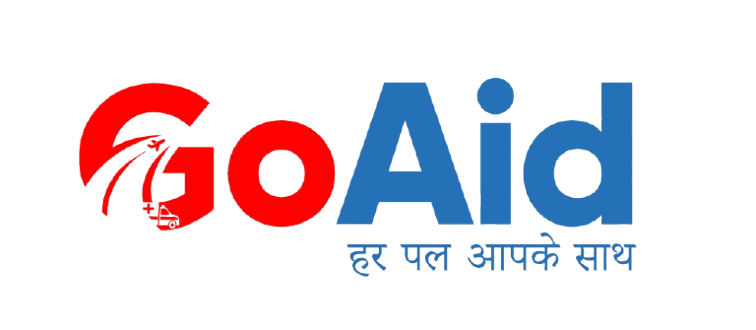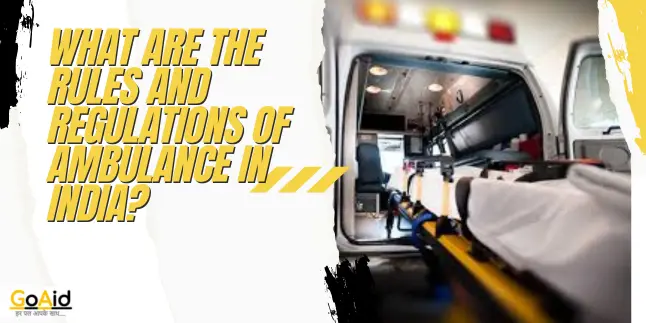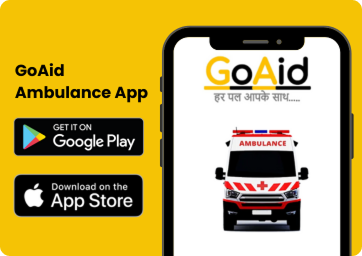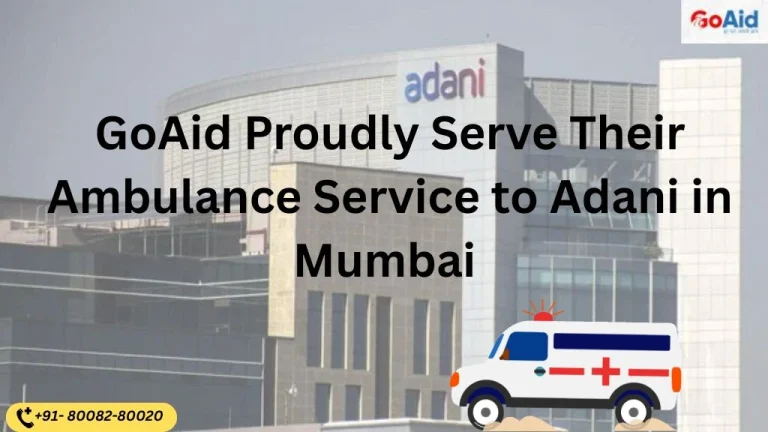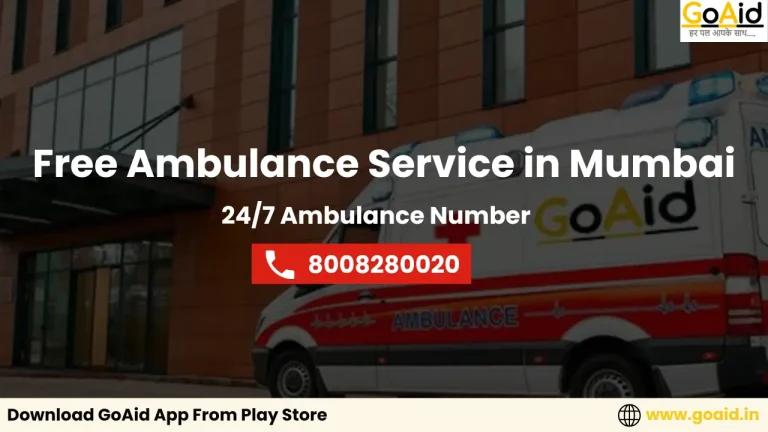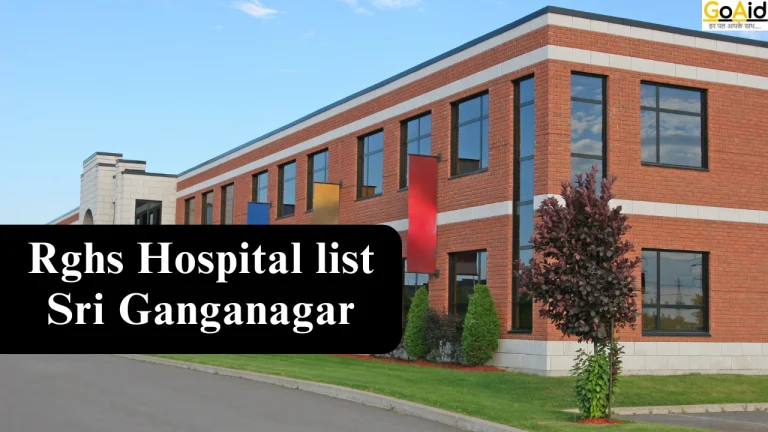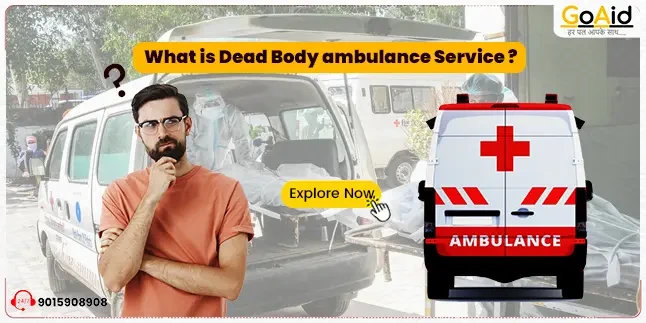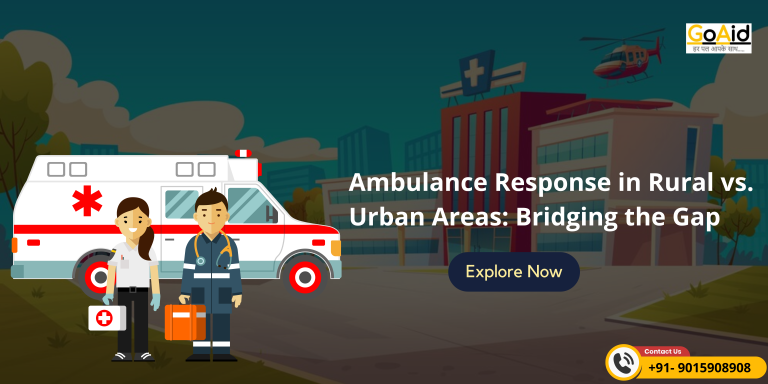In India, you can see hundreds of thousands of ambulances on the road on a daily basis. But do you know, that each of these ambulances is binding with the state or national rules and regulations of India? These rules and regulations must be followed for all these ambulances and ambulance service provider companies.
Do you have any ideas about those rules and regulations, or can we say about those regulatory bodies who control and regulate the ambulances in India, the answer could probably be ŌĆśNOŌĆÖ, this is why, in this blog, we have added all the details about these rules and regulations of ambulances in India that binds the ambulance service provider to follow some set of rules so law of the land ensures to be followed. If you are also excited to know about these rules and regulations and more details about ambulances in India or related to them, then read our blog to the end.
So, letŌĆÖs start-
What are the Different types of ambulance services in India?
In India, there are so many types of ambulances that can be seen running on the road. We have added the most common types of ambulance in India below. If you want to know a comprehensive detail about these ambulances.
- Normal Ambulance
- Oxygen Ambulance
- ICU Ventilator Ambulance
- Air Ambulance
- Dead Body Transport Ambulance Service
- Dead Body Freezer Box Ambulance
- Dead Body Freezer Box On Rent
- Hospitals Ambulance
- Surgery Ambulance
- Events Ambulance
Detail about Regulatory Bodies and Standards for Ambulances in India
Understanding the regulatory framework and standards for ambulances in India is crucial for ensuring that these emergency vehicles are safe, well-equipped, and capable of providing the necessary medical care during transportation. Here is a detailed overview of the regulatory bodies and standards:
1. Ministry of Health and Family Welfare (MoHFW)
The Ministry of Health and Family Welfare is the primary government body responsible for health policies, including those related to the services of ambulances in India. It oversees the implementation of healthcare initiatives and ensures compliance with health regulations.
2. National Ambulance Code (AIS-125)
The National Ambulance Code, also known as AIS-125, was formulated by the Ministry of Road Transport and Highways in collaboration with the Ministry of Health and Family Welfare. It sets comprehensive standards for the design, construction, and maintenance of ambulances in India. Key aspects include:
- Design and Construction: Specifications for the vehicleŌĆÖs structure, ensuring durability and safety during transit.
- Medical Equipment: Mandatory equipment lists for different types of ambulances, such as Basic Life Support (BLS) and Advanced Life Support (ALS) vehicles.
- Safety Features: Inclusion of safety features like proper restraints for patients and paramedics, fire extinguishers, and emergency exits.
- Signage and Markings: Clear identification of ambulances with appropriate markings and reflective signage for visibility.
3. Central Motor Vehicles Rules (CMVR)
Under the Central Motor Vehicles Rules, 1989, specific provisions govern the registration, licensing, and operation of ambulances in India:
- Registration: Ambulances must be registered with the Regional Transport Office (RTO) and must comply with the specifications laid down by the CMVR.
- Driver Qualifications: Drivers must have a valid commercial driving license and undergo specific training for operating emergency vehicles.
- Vehicle Fitness: Regular fitness checks are mandated to ensure ambulances are in optimal working condition.
4. State Health Departments
Each state in India has its health department that implements and monitors ambulance services within the state. These departments ensure compliance with national standards and may also introduce additional regulations to address local needs and conditions related to ambulances in India.
5. National Health Mission (NHM)
The National Health Mission, under the Ministry of Health and Family Welfare, plays a significant role in improving healthcare infrastructure, including ambulance services in India. It funds various state-level ambulance schemes like:
- 108 Ambulance Service: A free emergency service available in many states, providing quick access to pre-hospital care.
- 102 Ambulance Service: Focuses on transporting pregnant women and sick infants to healthcare facilities.
Also Read: Top 10 Private Cancer Hospitals in Delhi
6. Emergency Management and Research Institute (EMRI)
For regulating the ambulances in India, EMRI is a public-private partnership model that operates the 108 emergency services in many states. EMRI works closely with state governments to manage and dispatch ambulances efficiently.
7. Insurance Regulatory and Development Authority of India (IRDAI)
Ensures that ambulance services in India have adequate insurance coverage. This includes comprehensive vehicle insurance and professional liability insurance for paramedics and medical staff to cover any malpractice claims for using any ambulance in India.
8. Indian Public Health Standards (IPHS)
IPHS provides guidelines for the provision of healthcare services at various levels, including the standards for ambulance services in India, used in public health facilities. These guidelines aim to ensure uniformity and quality in the emergency response services for ambulances in India.
9. National Accreditation Board for Hospitals & Healthcare Providers (NABH)
NABH provides accreditation for healthcare providers, including ambulance services in India. Accreditation ensures that ambulance services adhere to high standards of quality and patient care.
Vehicle Standards and types of equipment
Ensuring that ambulances in India are equipped and maintained to specific standards is crucial for delivering effective emergency medical services. In India, the standards and equipment requirements for ambulances are guided by the National Ambulance Code (AIS-125) and other relevant regulations. Here is a detailed overview of vehicle standards and equipment for ambulances in India:
1. Design and Construction Standards
- Structural Integrity: Ambulances in India must have a robust and durable body structure to withstand the rigors of emergency operations.
- Dimensions: Specific dimensions for interior space to ensure there is enough room for medical personnel to perform necessary procedures.
- Accessibility: Easy access features such as wide doors and low steps to facilitate the quick and safe loading/unloading of patients.
2. Safety Features
- Seat Belts: All seats, including those for medical personnel and patients, must be equipped with seat belts.
- Restraints: Proper restraints for securing patients during transport to prevent further injury.
- Emergency Exits: Clearly marked and easily accessible emergency exits.
- Fire Safety: Fire extinguishers and other fire safety equipment must be readily available.
3. Electrical and Lighting Requirements
- Internal Lighting: Adequate internal lighting to allow medical procedures to be performed.
- External Lighting: Ambulances must have flashing lights, sirens, and reflective markings to alert other road users.
- Power Supply: Reliable electrical systems to support medical equipment, with backup power sources in case of failure.
4. Medical Equipment
Basic Life Support (BLS) ambulances in India:
- Oxygen Supply: Cylinders and masks for oxygen administration.
- First Aid Kit: Comprehensive kit including bandages, antiseptics, splints, etc.
- Basic Monitoring Devices: Blood pressure monitors, stethoscopes, etc.
- Stretcher and Wheelchair: For safe patient transport.
Advanced Life Support (ALS) ambulances in India:
- Defibrillator: For cardiac emergencies.
- Advanced Monitoring Devices: ECG machines, pulse oximeters, etc.
- Ventilator: To assist patients with respiratory issues.
- IV Supplies: For intravenous therapy.
- Medications: Emergency drugs and medications.
Full Detail: Difference between BLS Ambulance and ALS Ambulance
5. Communication and Navigation
- GPS System: For real-time navigation and location tracking.
- Communication Devices: Radios or mobile phones to maintain contact with hospitals and emergency control centers.
6. Hygiene and Sanitation
- Sanitation Supplies: Hand sanitizers, disinfectants, and other sanitation materials.
- Waste Disposal: Proper biohazard waste disposal systems to handle medical waste safely.
- Cleanable Surfaces: Interiors should be made of materials that can be easily cleaned and disinfected.
7. Vehicle Identification and Markings
- Identification: Ambulances in India must be marked with the word “AMBULANCE” in reverse on the front to be read correctly in rear-view mirrors.
- Reflective Markings: High-visibility reflective tape and logos to ensure the ambulance is visible from a distance.
- Emergency Symbols: Standard medical symbols like the Red Cross or Star of Life for easy identification.
8. Operational Standards
- Regular Maintenance: Routine checks and maintenance schedules to ensure all equipment and the vehicle itself are in good working order.
- Stock Management: Regular inventory checks to ensure all medical supplies are stocked and not expired.
- Training: Drivers and medical staff must be trained to operate all equipment correctly and perform necessary procedures.
9. Insurance and Compliance
- Comprehensive Insurance: Coverage for the vehicle, equipment, and medical personnel against accidents and liabilities.
- Regulatory Compliance: Adherence to all local and national regulations regarding vehicle operation, medical equipment, and staff qualifications.
List of Rules & Regulations of Ambulance in India
Ensuring the safety, efficiency, and effectiveness of ambulance services in India involves a comprehensive set of rules and regulations governed by multiple bodies and standards. Here is a detailed list of these rules and regulations:
1. Vehicle Registration and Licensing
- Registration: Ambulances in India must be registered with the Regional Transport Office (RTO) under the appropriate category.
- Licensing: Ambulances must have valid commercial vehicle licenses, and drivers must possess a valid commercial driving license with specific training in operating emergency vehicles.
2. National Ambulance Code (AIS-125)
- Design and Construction: Compliance with specifications for the vehicleŌĆÖs structural integrity, dimensions, and accessibility.
- Safety Features: Mandatory inclusion of seat belts, patient restraints, emergency exits, and fire safety equipment.
- Medical Equipment: Specific equipment requirements for different types of ambulances (Basic Life Support, Advanced Life Support).
3. Central Motor Vehicles Rules (CMVR), 1989
- Vehicle Fitness: Regular fitness certification from the RTO to ensure the vehicle is roadworthy.
- Insurance: Comprehensive insurance coverage for the vehicle, medical equipment, and personnel.
- Emission Standards: Compliance with environmental regulations regarding vehicle emissions.
4. Ministry of Health and Family Welfare (MoHFW) Guidelines
- Operational Protocols: Ambulance Services in India must follow the Standard operating procedures for handling emergencies, patient transport, and coordination with healthcare facilities.
- Training: For ambulances in India the Certification and regular training for ambulance drivers and medical personnel on emergency medical services (EMS) protocols is a must.
- Infection Control: Guidelines for maintaining hygiene and preventing infections within the ambulance.
5. State-Specific Regulations
- Local Health Department Rules: Additional regulations imposed by state health departments, which may include specific equipment standards, operational protocols, and service delivery requirements.
- Funding and Subsidy Programs: Participation in state-funded emergency medical service programs such as the 108 Ambulance Service.
6. Insurance Regulatory and Development Authority of India (IRDAI)
- Liability Insurance: Mandatory professional liability insurance for medical personnel to cover malpractice claims.
- Vehicle Insurance: Comprehensive coverage for the ambulance vehicle itself against accidents, theft, and damage.
7. Emergency Management and Research Institute (EMRI) Standards
- 108 Ambulance Service Protocols: Adherence to the operational standards set by EMRI for the 108 emergency services, including response times and coordination with emergency control centers.
8. Indian Public Health Standards (IPHS)
- Ambulance Service Standards: Compliance with IPHS guidelines for the provision of ambulance services in public health facilities.
9. National Accreditation Board for Hospitals & Healthcare Providers (NABH)
- Accreditation Requirements: Adherence to NABH standards for ambulances in India, which ensure high-quality care and operational efficiency.
10. Operational and Maintenance Standards
- Regular Maintenance: Scheduled maintenance and inspections to ensure the vehicle and equipment are in optimal working condition of ambulances in India.
- Inventory Management: Regular checks to ensure all medical supplies and equipment are stocked and not expired.
- Record Keeping: Maintaining detailed logs of vehicle maintenance, equipment checks, and operational incidents.
11. Patient Rights and Legal Obligations
- Right to Emergency Care: Legal obligation to provide emergency medical care to all patients without discrimination.
- Data Privacy: Ambulance Services in India must ensure patient information confidentiality and adherence to data protection regulations.
- Penalties for Misuse: Legal penalties for the misuse of ambulance services, including false emergency calls and misuse of government-funded services.
12. Communication and Navigation
- GPS and Tracking: ItŌĆÖs Mandatory for ambulances in India to install the GPS for real-time tracking and navigation.
- Communication Devices: Reliable communication systems to coordinate with hospitals and emergency control centers.
13. Public Awareness and Education
- Public Awareness Campaigns: Initiatives to educate the public about when and how to use ambulance services.
- First Aid Training: Promoting first aid training among the public to provide immediate assistance until professional help arrives.
Licensing and Certifications for Ambulances in India
Licensing and certification are crucial components for ambulances in India to ensure that ambulances and their personnel meet the required standards for providing emergency medical services. These processes help maintain the quality, safety, and reliability of ambulance services across the country. Here is a detailed overview:
1. Vehicle Licensing
- Registration with Regional Transport Office (RTO): Ambulances in India must be registered under the commercial vehicle category with the RTO. The registration process includes submitting necessary documents such as proof of ownership, vehicle fitness certificate, insurance, and pollution under control (PUC) certificate.
- Commercial Vehicle License Plate: Ambulances receive a commercial vehicle license plate, distinguishing them from private and non-commercial vehicles.
2. Vehicle Fitness Certification
- Periodic Inspections: Ambulance services in India are required to undergo regular fitness inspections to ensure they are roadworthy and meet safety standards. These inspections check the vehicleŌĆÖs mechanical condition, safety features, and compliance with emission norms.
- Fitness Certificate: Issued by the RTO, this certificate must be renewed periodically, typically every one or two years, depending on state regulations.
3. Insurance Requirements
- Comprehensive Insurance: Ambulances in India must have comprehensive insurance coverage that includes protection against accidents, theft, and damages. This coverage also extends to the medical equipment on board.
- Liability Insurance: Professional liability insurance for medical staff to cover malpractice claims and other legal liabilities.
4. Driver and Staff Certification
- Commercial Driving License (CDL): Ambulance drivers must possess a valid CDL, which requires additional training and testing compared to a standard driving license. The CDL ensures that drivers are proficient in handling larger and more complex vehicles.
- Emergency Vehicle Operator Course (EVOC): Many states require ambulance drivers to complete an EVOC, which provides training on safe and efficient driving techniques specific to emergency vehicles.
- Medical First Responder (MFR) Training: Drivers and paramedics often undergo MFR training to handle medical emergencies and provide basic life support until they reach a hospital.
5. Medical Personnel Certification
- Paramedics and Emergency Medical Technicians (EMTs): Must be certified by recognized training institutions. The certification process includes rigorous training in emergency care, advanced life support, and the use of medical equipment for all ambulance services in India.
- Continuous Education: Paramedics and EMTs of ambulances in India are required to participate in ongoing education and training programs to stay updated with the latest medical practices and protocols.
- Basic Life Support (BLS) and Advanced Life Support (ALS) Certification: Depending on the level of care they provide, medical personnel must hold valid BLS or ALS certification from recognized bodies such as the American Heart Association (AHA) or equivalent Indian institutions.
6. Institutional Accreditation
- Hospital and Service Provider Accreditation: Ambulance services in India operated by hospitals or private providers often seek accreditation from bodies like the National Accreditation Board for Hospitals & Healthcare Providers (NABH). Accreditation ensures adherence to high standards of patient care and operational efficiency.
- Compliance with Indian Public Health Standards (IPHS): Public ambulance services must comply with IPHS guidelines, which set benchmarks for healthcare facilities, including ambulance services.
7. Compliance with National and State Regulations
- Adherence to the National Ambulance Code (AIS-125): Ensures that ambulances meet national standards for design, equipment, and operational protocols.
- State Health Department Regulations: Compliance with additional rules and guidelines set by state health departments, which may include specific equipment standards, staffing requirements, and operational protocols.
8. Training and Certification Programs
- Government and Private Training Programs: Various government and private institutions offer training and certification programs for ambulance drivers, paramedics, and EMTs. These programs are designed to equip personnel with the skills and knowledge required for emergency medical services.
- Workshops and Seminars: Regular workshops and seminars organized by health authorities and professional bodies to update ambulance personnel on the latest advancements in emergency care and best practices.
Also Read: Road Accidents in India: Causes and Safety Measures for Safer Roads
Operation Protocols for Ambulances in India
Operation protocols are crucial for the efficient and effective functioning of ambulance services in India. These protocols ensure that ambulance operations are standardized, safe, and able to provide timely medical assistance to those in need. Here is a detailed overview of the operation protocols for ambulances in India:
1. Response Time Standards
- Emergency Response Time: Ambulances in India should respond to emergency calls within a specified timeframe, usually within 10-15 minutes in urban areas and 20-30 minutes in rural areas.
- Dispatch Protocol: Upon receiving an emergency call, the ambulance services in India must be dispatched immediately. Dispatch centers use GPS and other technologies to track and deploy the nearest available ambulance.
2. Medical Protocols
- Pre-Hospital Care: Protocols for the type of care provided en route, including basic life support (BLS) and advanced life support (ALS) as needed.
- Patient Assessment: Standardized procedures for assessing the patient’s condition, monitoring vital signs, and stabilizing the patient.
- Documentation: Accurate and thorough documentation of the patient’s condition, treatments provided, and any changes in status during transport.
3. Coordination with Hospitals
- Pre-Notification: Ambulances in India must communicate with the receiving hospital while en route, providing details about the patient’s condition and estimated time of arrival.
- Transfer of Care: Clear protocols for the handover of the patient to hospital staff, including a verbal report and transfer of written records.
4. Safety Protocols
- Vehicle Safety: Regular checks of all safety equipment, including seat belts, patient restraints, and fire extinguishers.
- Driver Conduct: Adherence to safe driving practices, including compliance with traffic laws, use of sirens and lights appropriately, and avoiding reckless driving.
5. Hygiene and Infection Control
- Sanitization Procedures: Regular cleaning and disinfection of the ambulance to prevent infection. This includes cleaning after each patient’s transport and routine deep cleaning.
- Personal Protective Equipment (PPE): Use of PPE by staff of Ambulances in India to protect themselves and patients from infectious diseases.
6. Communication Protocols
- Communication Systems: For Ambulance Services in India, itŌĆÖs crucial to install a Reliable communication device & maintain contact with dispatch centers, hospitals, and other emergency services.
- Incident Reporting: Protocols for reporting incidents, accidents, or any deviations from standard procedures.
7. Training and Drills
- Regular Training: Continuous training programs for ambulance staff to keep them updated with the latest medical practices and emergency response techniques.
- Emergency Drills: Regular drills to simulate emergency scenarios and improve response times and coordination among the team.
Read More: Piles: Causes, Treatment, Prevention, and How Much Water You Should Drink
Insurance and Liability for Ambulances in India
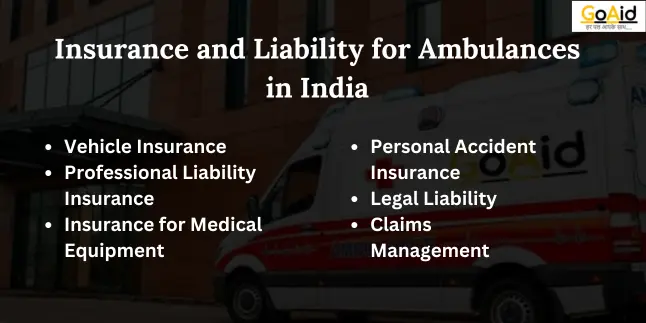
Insurance and liability are critical aspects to ensure financial protection and legal compliance for ambulance services in India. Here is a detailed overview of insurance and liability requirements for ambulances in India:
1. Vehicle Insurance
- Comprehensive Insurance: Ambulances must have comprehensive insurance coverage that includes protection against accidents, theft, and damage. This ensures that the vehicle can be repaired or replaced in the event of an incident.
- Third-Party Liability Insurance: Mandatory insurance that covers damages to third parties caused by the ambulance. This includes bodily injury and property damage to other individuals or vehicles.
2. Professional Liability Insurance
- Medical Malpractice Insurance: Coverage for paramedics, EMTs, and other medical personnel against claims of malpractice or negligence. This insurance protects healthcare providers from financial losses due to legal claims.
- Errors and Omissions Insurance: Coverage that protects against claims arising from professional mistakes or failures in providing medical services.
3. Personal Accident Insurance
- Driver and Staff Coverage: Insurance that covers ambulance drivers and medical staff in case of accidents resulting in injury or death while on duty. This provides financial compensation to the individuals or their families.
4. Insurance for Medical Equipment
- Equipment Insurance: Coverage for all medical equipment inside the ambulance, including stretchers, defibrillators, oxygen tanks, and monitoring devices. This ensures that the equipment can be repaired or replaced if damaged or stolen.
5. Legal Liability
- Compliance with Regulations: Ensuring all operations comply with national and state regulations to avoid legal liabilities. Non-compliance can result in fines, penalties, or legal actions for ambulance services in India.
- Contractual Liability: Coverage for liabilities arising from contracts with third parties, such as hospitals, event organizers, or government agencies.
6. Claims Management
- Incident Reporting: Protocols for reporting incidents or accidents to insurance companies promptly to facilitate claims processing.
- Documentation: Maintaining thorough documentation of incidents, including detailed reports, photographs, and witness statements to support insurance claims.
Challenges & Way Forward
We have listed all the challenges and ways forward to related to the rules and regulations in India for Ambulance Services:
Challenges
- Inadequate Infrastructure and Resources
Challenge: Many regions, especially rural and remote areas, lack sufficient ambulances and equipped medical facilities to handle emergencies.
Impact: Delays in response times and inadequate pre-hospital care, leading to higher morbidity and mortality rates.
- Skilled Workforce Shortage
Challenge: There is a significant shortage of trained paramedics, EMTs, and qualified ambulance drivers.
Impact: Compromised quality of care during transport and increased risks for patients in critical conditions.
- Funding and Financial Constraints
Challenge: Limited funding for public ambulance services and high operational costs for private providers.
Impact: Insufficient coverage and maintenance, leading to subpar service quality and reliability.
- Regulatory Compliance and Enforcement
Challenge: Inconsistent enforcement of standards and regulations across different regions.
Impact: Variability in the quality and safety of ambulance services in India, with some operators not meeting required standards.
- Public Awareness and Misuse of Services
Challenge: Low public awareness about the appropriate use of ambulance services in India and frequent misuse for non-emergency situations.
Impact: Strain on resources, delays in emergency response, and increased operational costs.
- Traffic and Road Infrastructure Issues
Challenge: Poor road conditions, traffic congestion, and lack of dedicated emergency lanes in many urban areas.
Impact: Delayed arrival times and increased difficulty in reaching patients quickly and safely.
Read This: Introduction to the Common Causes of Ambulance Delays in India
Way Forward
- Enhancing Infrastructure and Resource Allocation
- Solution: Invest in expanding and upgrading ambulance fleets, especially in underserved rural and remote areas.
- Outcome: Improved access to emergency medical services and reduced response times of ambulances in India.
- Training and Capacity Building
- Solution: Develop and implement comprehensive training programs for paramedics, EMTs, and ambulance drivers.
- Outcome: Enhanced skills and knowledge, leading to better patient care and outcomes during emergencies.
- Increasing Funding and Financial Support
- Solution: Secure more government funding and encourage public-private partnerships to support ambulance services.
- Outcome: Improved financial stability, allowing for better service provision, maintenance, and expansion.
- Strengthening Regulatory Framework
- Solution: Standardize regulations and ensure rigorous enforcement across all regions, with regular audits and compliance checks.
- Outcome: Uniform quality and safety standards, leading to more reliable and effective ambulance services nationwide.
- Public Education and Awareness Campaigns
- Solution: Launch campaigns to educate the public on the proper use of ambulance services and the importance of emergency response.
- Outcome: Reduced misuse of services, optimized resource utilization, and quicker response to genuine emergencies.
- Improving Traffic Management and Road Infrastructure
- Solution: Collaborate with urban planners and traffic authorities to develop better road infrastructure and implement dedicated emergency lanes.
- Outcome: Faster and safer transit for ambulances, resulting in timely medical assistance and potentially saving more lives.
Conclusion
In conclusion, the rules and regulations governing ambulance services in India ensure high standards of safety, efficiency, and care in emergency medical services. These encompass stringent guidelines for vehicle design and equipment, mandatory licensing and certifications for vehicles and personnel, adherence to operational protocols, and robust insurance and liability measures for ambulances in India.
Compliance with these regulations, overseen by various national and state regulatory bodies, ensures ambulances are well-equipped and staffed by trained professionals. By addressing challenges such as infrastructure gaps and workforce shortages, and fostering continuous improvement, India can further enhance the effectiveness and reliability of its ambulance services, ultimately improving public health outcomes.
FAQs
The Ministry of Health and Family Welfare (MoHFW) and the Ministry of Road Transport and Highways govern the regulations for ambulances in India, with guidelines like the National Ambulance Code (AIS-125).
Ambulances must adhere to specifications outlined in the National Ambulance Code, ensuring structural integrity, accessibility, and safety features such as emergency exits and proper restraints for ambulances in India.
Ambulances are required to carry essential medical equipment like oxygen cylinders, defibrillators, first aid kits, and stretchers, as specified by the National Ambulance Code and state regulations.
Yes, ambulance drivers and medical staff must undergo specialized training and obtain certifications in emergency medical care, vehicle operation, and patient transport protocols.
Ambulances must be registered with the Regional Transport Office (RTO) and licensed as commercial vehicles, adhering to the Central Motor Vehicles Rules and obtaining necessary permits and insurance coverage.
Misuse of ambulances, including false emergency calls or using ambulances for non-emergency purposes, can result in fines, penalties, and legal action under Indian law.
Ambulance services in India are funded through various channels, including government subsidies, public-private partnerships, and health insurance schemes, aimed at ensuring accessibility and affordability of emergency medical care.
